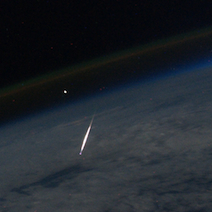About three years ago, astrophysicists discovered an unexplained large-scale coherent motion in our Universe, the “dark flow”. A new study now contradicts the dark flow theory.
First observed in 2008 by a NASA team led by Alexander Kashlinsky, the dark flow describes the coherent motion of galaxy clusters. This is in contradiction with the standard model, which predicts that all matter in the Universe should flow randomly in all directions, with respect to the cosmic microwave background.
Various theories tried to explain what could cause this strange motion. One of them suggests that there might be another universe existing beyond our own, dragging matter in our Universe closer and closer through its gravitational pull. Another hypothesis suggests this could be due to a region of spacetime fundamentally different from our observable Universe.

A new study from the University at Buffalo has now found evidence against the dark flow theory: exploding stars in different parts of the Universe do not appear to be moving in sync. The findings appeared in the Journal of Cosmology and Astroparticle Physics.
De-Chang Dai, William H Kinney and Dejan Stojkovic used data from 557 type IA supernovae: the closest supernovae to Earth all share a coherent motion in one direction, while others further out are heading to different directions. The difference in motion becomes noticeable for distances above 680 million light-years.
These measurements are inconsistent with the dark flow theory, but in good agreement with the standard cosmological model, known as ΛCDM (Lambda Cold Dark Matter) model.
Is there a sibling universe beyond the bounds of our own, or some fundamentally different region of spacetime? This new study seems to answer the question negatively. However, it is still too early and further measurements are needed to definitely rule out the dark flow theory, or not…
Reference
De-Chang Dai, William H Kinney, Dejan Stojkovic. Measuring the cosmological bulk flow using the peculiar velocities of supernovae. Journal of Cosmology and Astroparticle Physics, 2011; 2011 (04): 015 DOI:10.1088/1475-7516/2011/04/015

